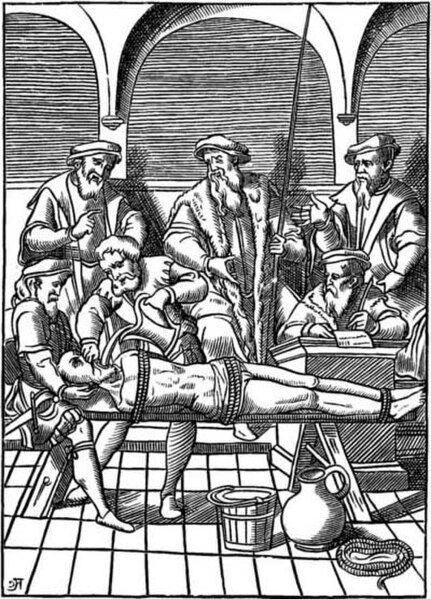Waterboarding is a form of torture in which water is poured over a cloth covering the face and breathing passages of an immobilized captive, causing the person to experience the sensation of drowning. In the most common method of waterboarding, the captive's face is covered with cloth or some other thin material and immobilized on their back at an incline of 10 to 20 degrees. Torturers pour water onto the face over the breathing passages, causing an almost immediate gag reflex and creating a drowning sensation for the captive. Normally, water is poured intermittently to prevent death; however, if the water is poured uninterruptedly it will lead to death by asphyxia. Waterboarding can cause extreme pain, damage to lungs, brain damage from oxygen deprivation, other physical injuries including broken bones due to struggling against restraints, and lasting psychological damage. Adverse physical effects can last for months, and psychological effects for years. The term "water board torture" appeared in press reports as early as 1976.

Two United States soldiers and one South Vietnamese soldier waterboard a captured North Vietnamese prisoner of war near Da Nang. Published on the front cover of The Washington Post on 21 January 1968.
Demonstration of waterboarding at a street protest during a visit by Condoleezza Rice to Iceland, May 2008
The Water Torture—Facsimile of a woodcut in J. Damhoudère's Praxis Rerum Criminalium, Antwerp, 1556.
Torture of the English by the Dutch according to the English account
Torture is the deliberate infliction of severe pain or suffering on a person for various reasons, including punishment, extracting a confession, interrogation for information, or intimidating third parties.
Captured Viet Cong soldier, blindfolded and tied in a stress position by American forces during the Vietnam War, 1967.
Two Elamite chiefs flayed alive after the Battle of Ulai, Assyrian relief
"The custody of a criminal does not require torture" by Francisco Goya, c. 1812
Tear gas used during the 2019–2020 Hong Kong protests. Use of tear gas on protestors is sometimes considered a form of torture.








